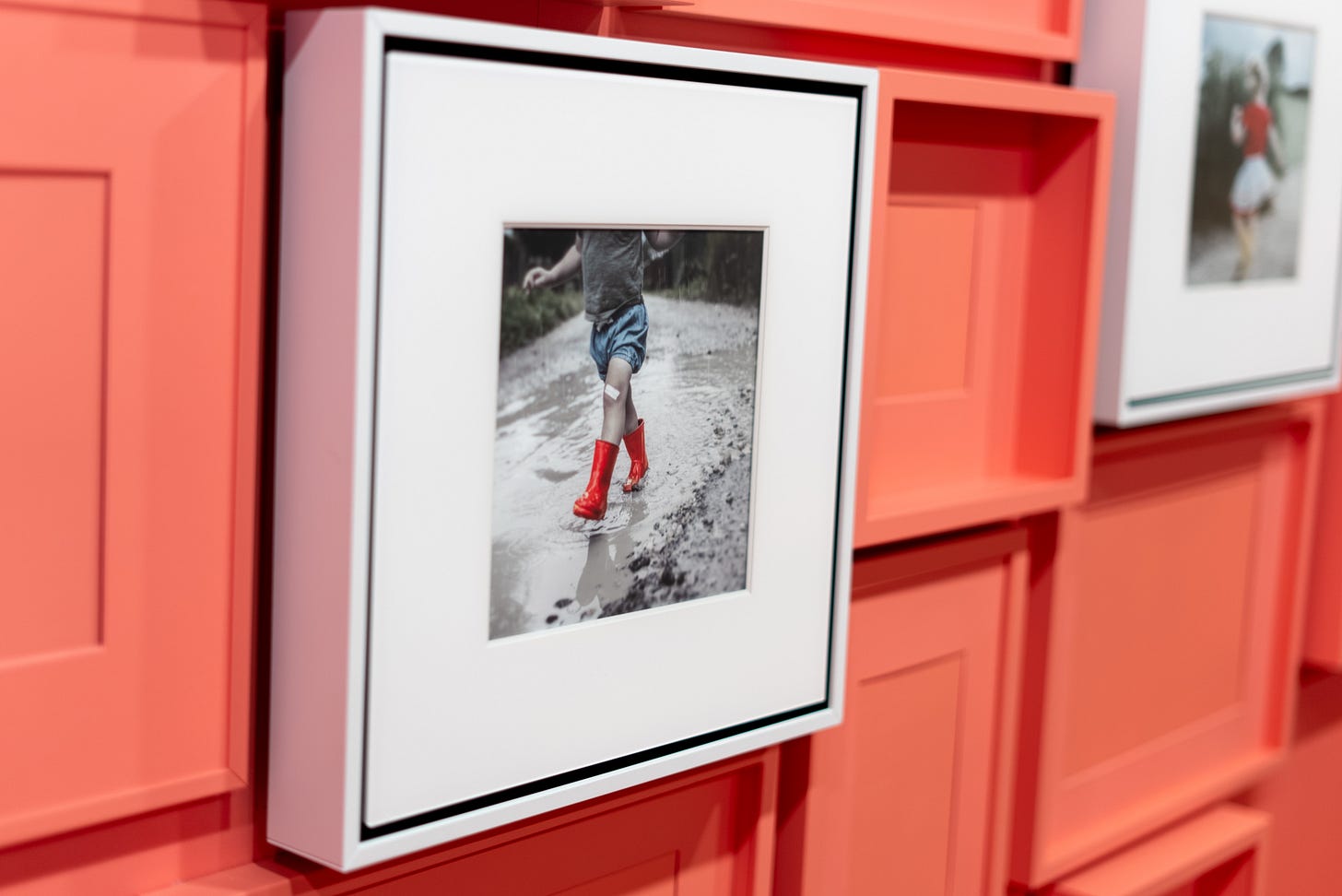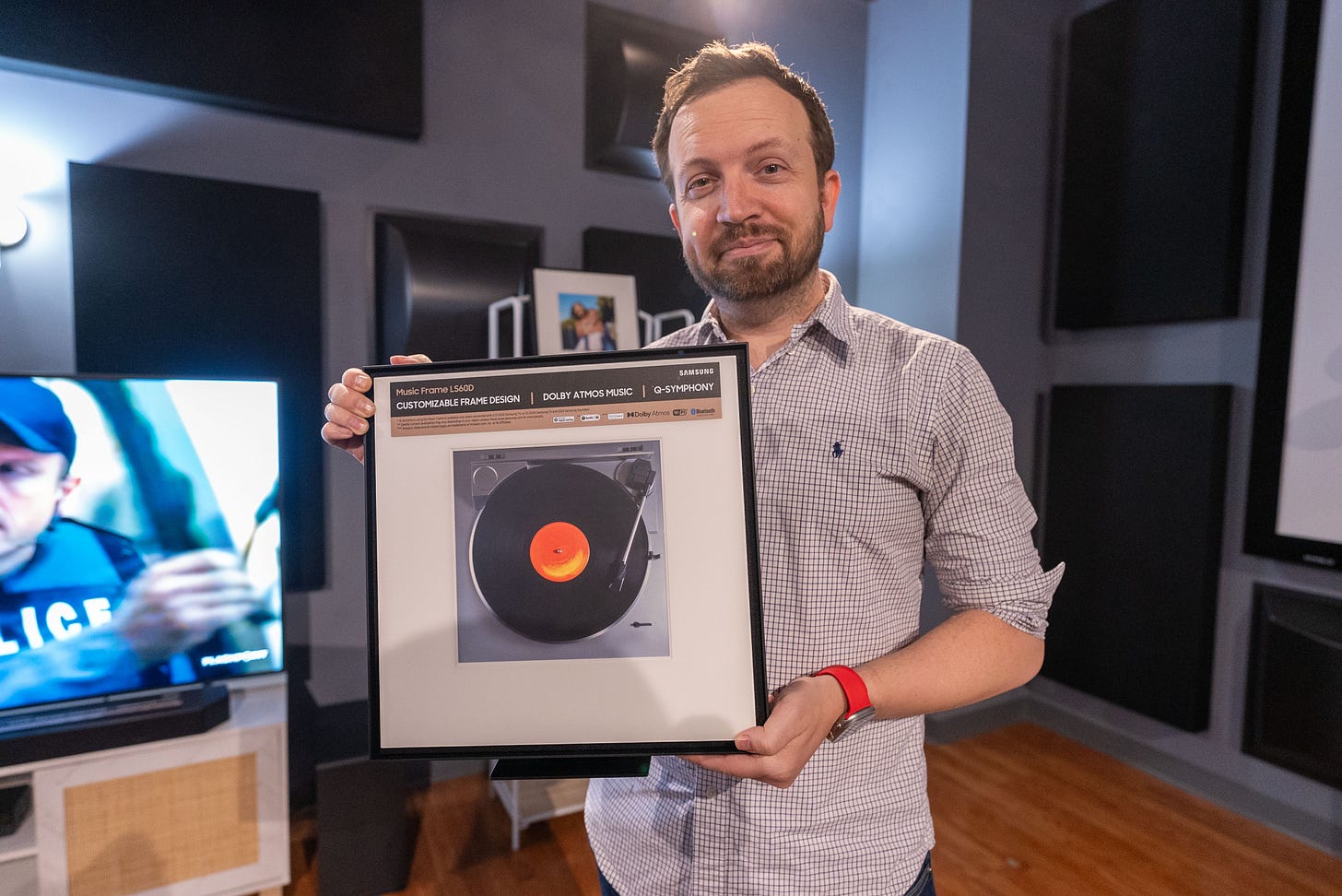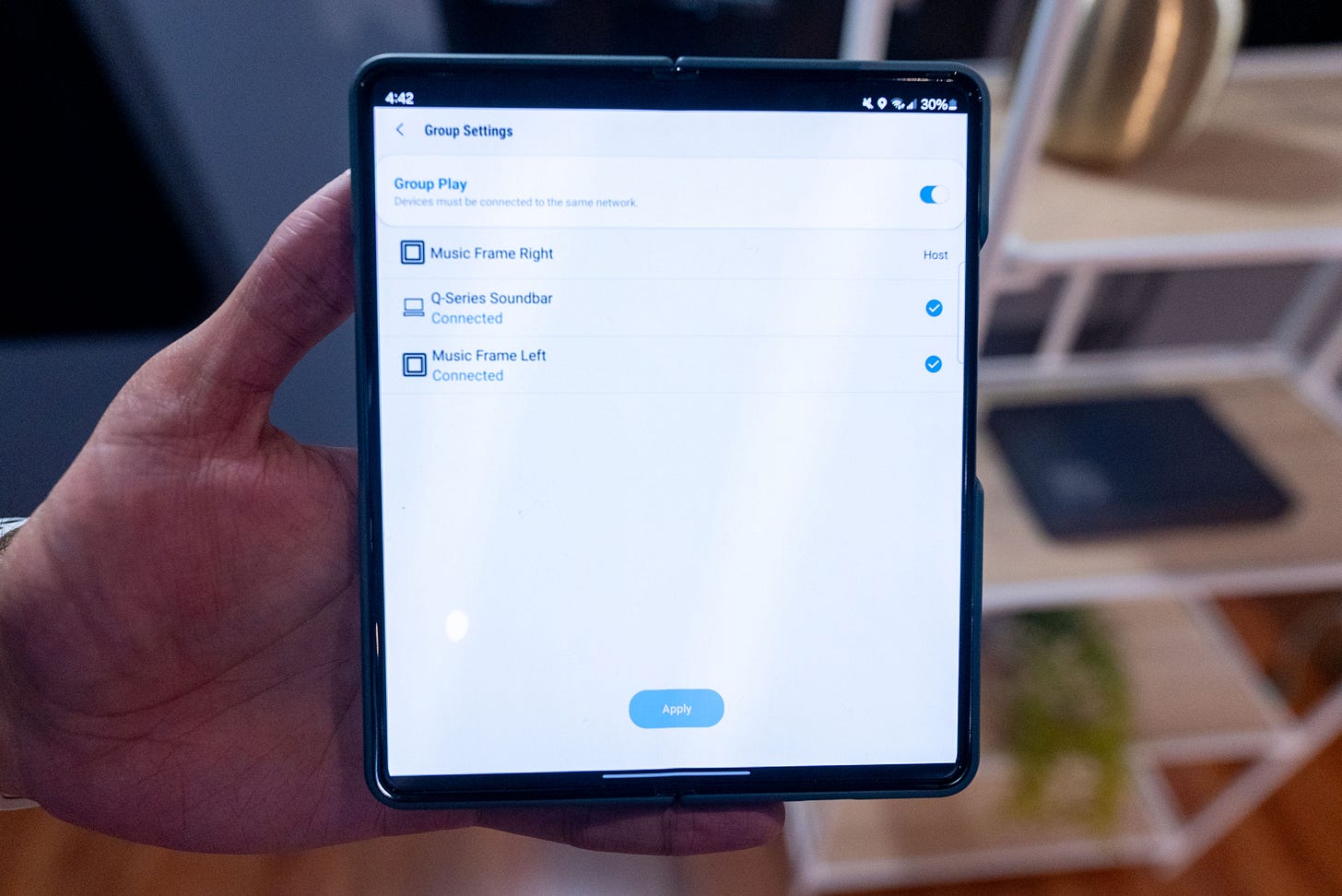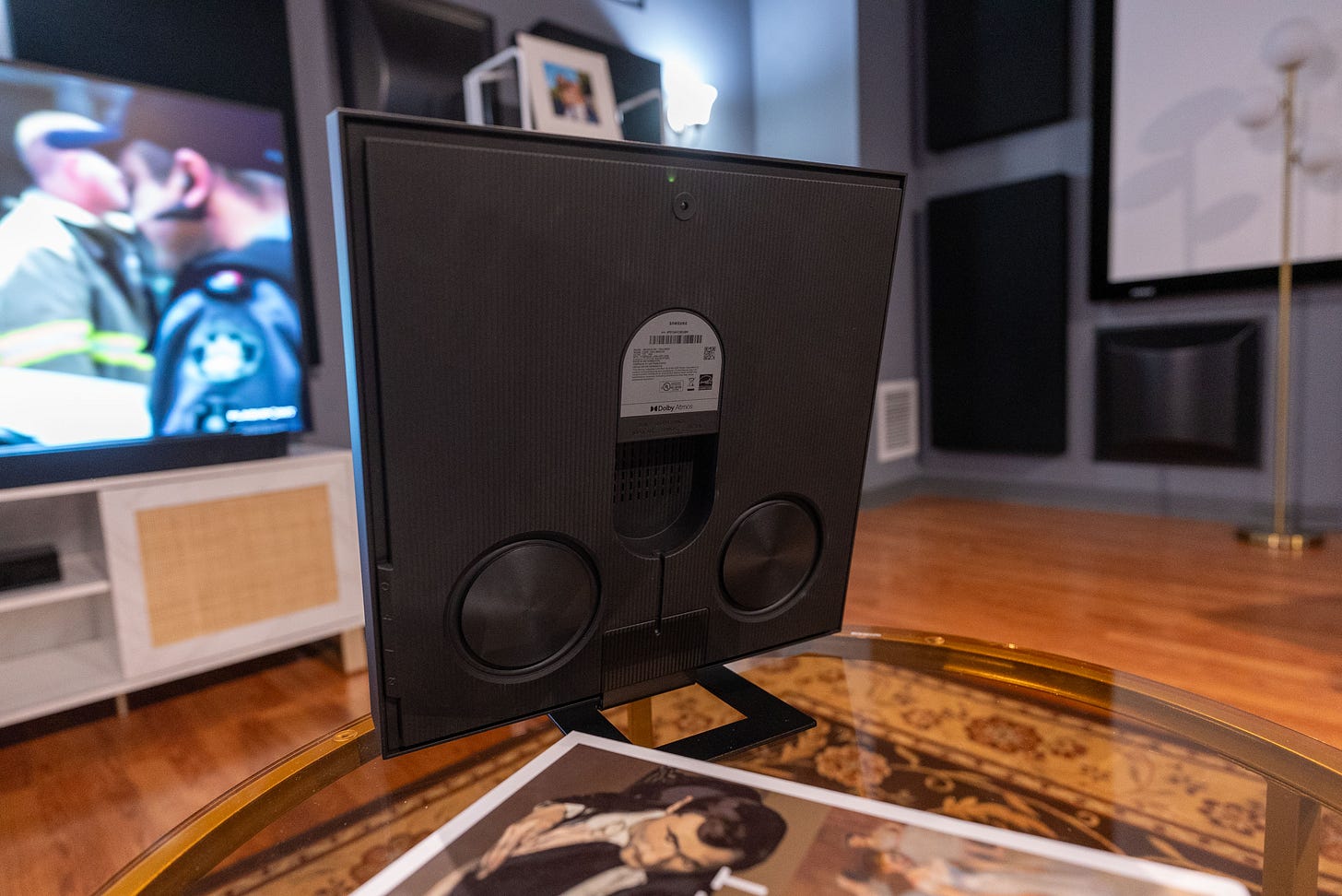Samsung Music Frame hands-on review: an orchestra compared to your average wireless speaker
Samsung’s deceptively simple wireless speaker packs serious sound and connectivity
The Music Frame is Samsung’s latest product that disguises tech as art. While this looks like an unassuming, but admittedly thick picture frame, the Music frame is actually a wireless speaker. The Music Frame first debuted at CES 2024, but I finally got a chance to hear what it sounds like at a Samsung Facility earlier this month.
Initially, I balked at the Music Frame’s $399 price (plus a $100 Best Buy gift card), but this device is far more than a flimsy speaker behind a cheap poster frame. It’s one of the best-sounding speakers I’ve heard this year and it has more capabilities than you would expect.
Pros:
🖼️ Deceptively simple and beautiful design
🔊 Serious spatial sound and does Dolby Atmos with just one speaker
👯♂️ Sounds even better as a pair with a second Music Frame
Cons:
🏋️♂️ 14-pound weight requires serious wall mounting
📺 Q-symphony pairing limits connectivity (only) to Samsung TVs
🤑 $399 ($299 with deal) launch price is a lot
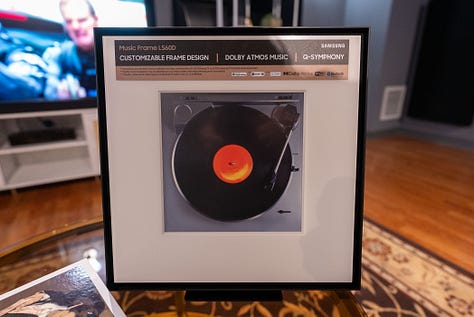
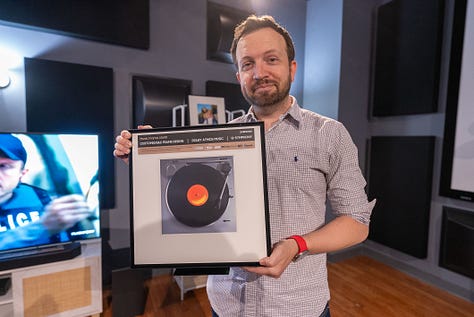
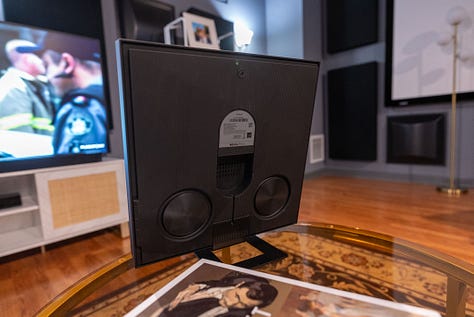
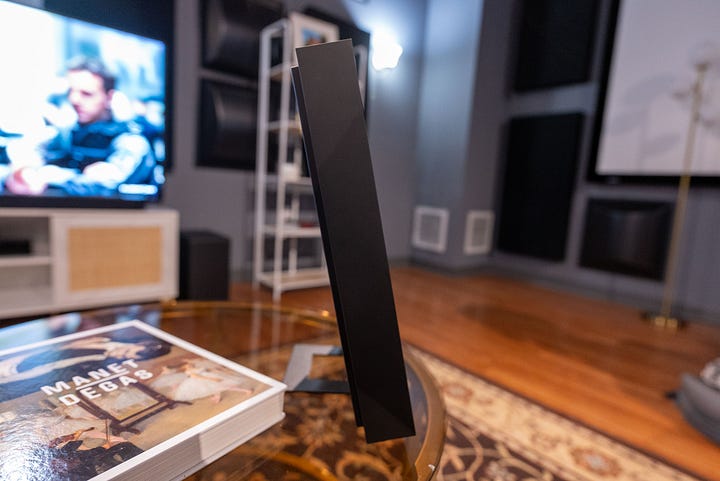
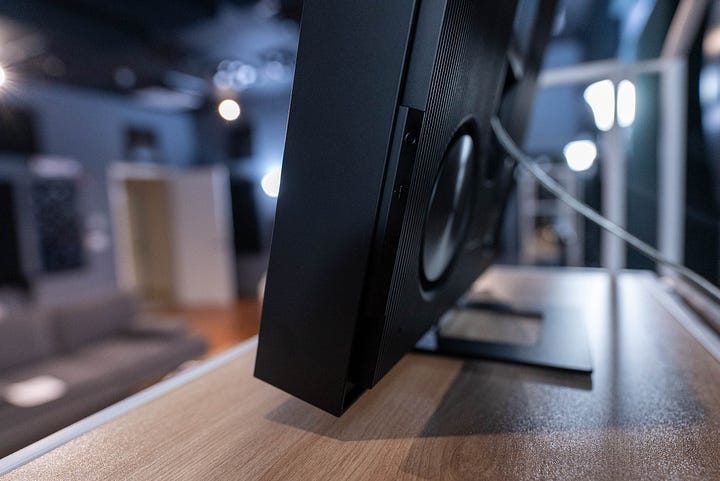
📼 It’s analog baby. What’s refreshingly surprising about the Music Frame’s design is it doesn’t seem like a piece of tech at all from the outside. There isn’t any screen on the device’s 13-inch by 13-inch frame. Instead, there’s only one indicator LED and a small trio of buttons on the side, while the front of the Music frame displays a physical 8-inch-by-8-inch print or photo you can replace. And for those less savvy to add their own photo themselves, Samsung plans to sell several preset designs and will offer customized prints.
🔊 Sonic symphony. Behind its deceptively simple exterior, the Samsung Music Frame has six speakers and a built-in subwoofer designed to drive serious spatial sound. I got to hear just how powerful the speakers are when listening to songs like Attention by Charlie Puth, and just one Music Frame could fill a large room with well-balanced and bassy audio. What’s even more impressive is the Music Frame on its own can support Dolby Atmos, which means it’s also a competitor for the $449 Sonos Era 300.
🏋️Woah this is heavy. While those six speakers inside Music Frame are impressive, they’re also pretty heavy causing the Music Frame to weigh a total of 14 pounds. If you’re going to wall mount Samsung’s wireless speaker, you’ll want to make sure you drill your mounting holes into a stud behind your wall. Alternatively, Samsung includes a stand that pitches the Music Frame at a slight angle. So you’ll want to place it on a substantial piece of furniture.
👯 Even better as a pair. Everything is better when you have two or more and that’s true for the Samsung Music Frame. You can pair two or more of these wireless speakers over Bluetooth to give yourself a proper surround sound system. You can also pair the Music Frame with a Samsung TV, and combined with the Samsung Frame TV you could have a completely stealthy entertainment system masquerading as a small art gallery.
👎 Samsung Q-Symphony limitations. Unfortunately, Samsung Q-Symphony limits you to pairing only two devices at a time so you can only connect up to a combination of two Music Frames or one Music Frame and a Samsung Soundbar to a Samsung TV, which is a really disappointing limitation.
📲 Remote control from your phone. The Music Frame also connects to Wi-Fi and SmartThings, so you can fully control it from your smartphone. Lastly, you can control the wireless speaker with your voice using either Bixby, Alexa, or Google Assistant.
🤑 Serious price. Now the real kicker for the Samsung Music Frame is it costs $399 for just one. Hearing the price put a serious damper on my idea to buy two let alone one. But remember this speaker packs some serious capabilities with its built-in sub and ability to support Dolby Atmos all on its own. It’s a lot more symphonically capable than your average wireless speaker. You can also find deals that include a $50 Samsung gift card or a $100 Best Buy gift card to help the sting out of the sticker shock.
Kevin Lee is The Shortcut’s Creative Director. Follow him on Twitter @baggingspam.



